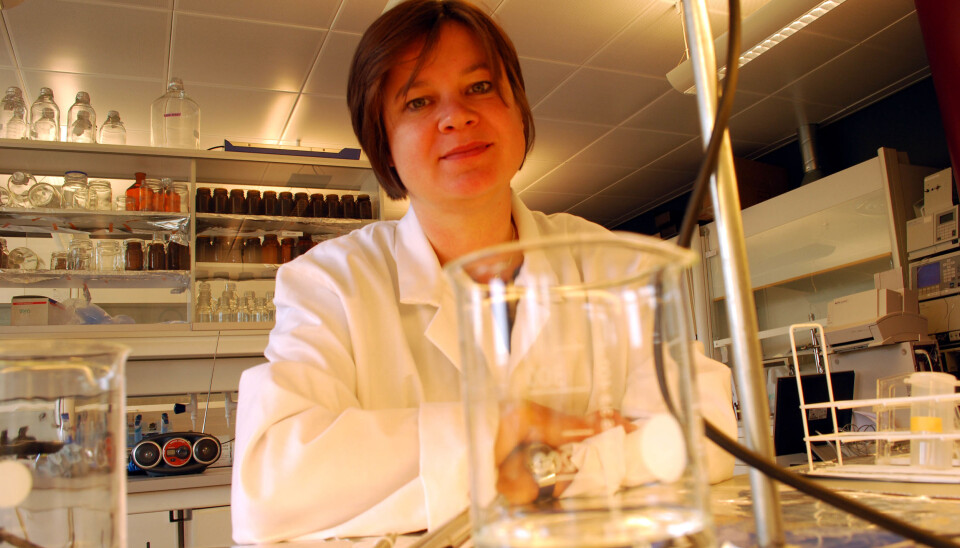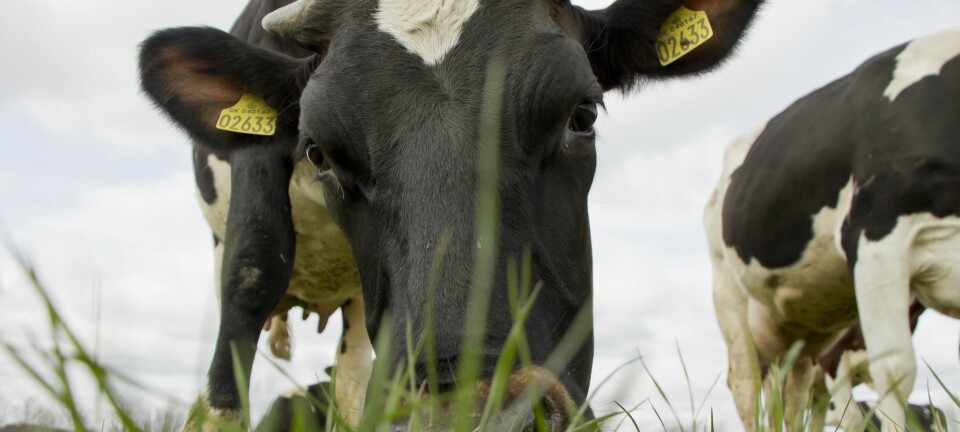This article was produced and financed by The Fram Centre

Hunting mysterious environmental toxins
PFAS is a group of environmental toxins which have been observed in almost every organism and every ecosystem in the entire world, including humans. But nobody really understands how they enter the body.
Denne artikkelen er over ti år gammel og kan inneholde utdatert informasjon.
As in every crime mystery, everyone thought it was the butler who did it. But it was not that easy. In a laboratory in Tromsø, the hunt for the villain continues.
“Yes, we can compare it to a crime. We know where the villain has been, but we can’t figure out where he comes from.”
These are the words of Dorte Herzke, senior research scientist at the Norwegian Institute for Air Research (NILU) at the FRAM Centre in Tromsø.
In company with other scientists, she has long been on the trail of the mysterious PFAS (perfluoroalkylated substances).
Environmental toxins in the body

PFAS is are a group of environmental toxins which have been observed in almost every organism and every ecosystem in the entire world, including humans.
Herzke explains: “Generally speaking, humans should not have these toxins in their bodies. We know already that many people are exposed to the ‘cocktail effect’, in other words what happens when the total concentration of environmental toxins in the body becomes so great that it becomes harmful. We also have indications that PFAS may be linked to diabetes and delayed puberty.”
In order to understand how humans are exposed to these chemicals and how food may play a part, the EU has funded a research project with NILU and the Norwegian Institute for Nature Research (NINA) as leader for one of the work packages.
“PFAS are water and oil repellent and for that reason are widely used for purposes such as impregnating textiles, leather and paper, and in fire fighting foam and floor wax. The mystery we are trying to solve is how these substances end up in the body,” says Herzke.
Analysis of food
‘You are what you eat’ was the starting point for a possible theory, that food packaging might contain PFAS. And so the researchers sought out the nearest supermarket.
In the past few years, hundreds of foodstuffs have been collected and analysed in Tromsø and compared with identical foodstuffs from three other European countries: the Czech Republic, Italy and Belgium.
“The first results show that levels of PFAS are generally low, with a few exceptions. Why, we don’t know,” explains Herzke.
“So perhaps it’s not a case of ‘You are what you eat’ but rather ‘You are what you eat and what you have in your home.’”
On the run, in China
So the PFAS villain is still on the run.
Since most European and North American countries have stopped producing these substances, China has become one of the world’s largest manufacturers of PFAS. In Norway, PFAS are used in many areas and discharges occur throughout the entire country.
In a follow-up to the project, the researchers will collect samples from different sources in Norway and China in order to better understand the transport and exposure of PFAS.
The project is part of the FRAM Centre’s flagship research collaboration entitled “Hazardous Substances - effects on ecosystems and health.” The project is chaired by the Norwegian Institute for Air Research (NILU) with Akvaplan-niva/NIVA as vice-chair. There are several institutions in the FRAM Centre engaged in research into various problems tied to environmental toxins and all these will be natural participants in flagship projects.
All these institutions co-operate with several Norwegian and international partners.
External links
- Dorte Herzke's profile
- “Hazardous Substances – effects on ecosystems and health.” Project description

































